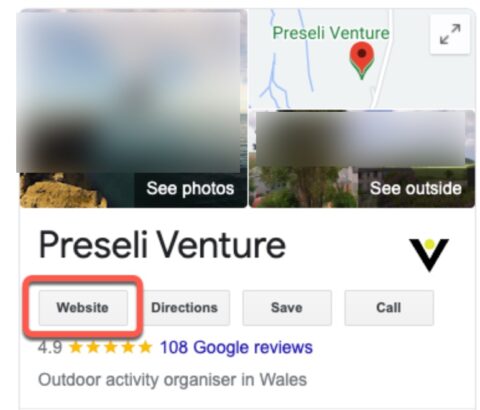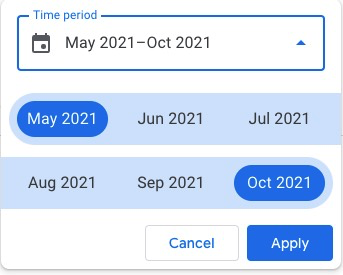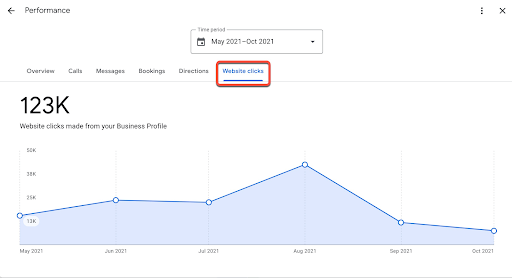Be honest: Have you ever put together what you now know to be one of the worst SEO reports ever made?
You know what I mean – a bloated 10-pager filled with pointless data that will mean literally nothing to the client, and that they’ll probably never read.
You add Google Analytics (GA) users, sessions, page views, bounce rates, time on site, and traffic by channel for a start.
You sprinkle on some Google My Business (GMB) data to show the number of listing views on Search and Maps, then plug in Google Search Console for a clicks and impressions table.
“Look how busy I’ve been,” you say to yourself. Look at all of those numbers! So clever.
I’ll own up – I’m guilty as charged. That’s not to say that some of that data won’t be useful for those clients.
It’s just that before we put together our reports, there are a few things we need to get straight first, in order to do the things that reporting generally needs to do.
We report in order to collect the right data and to analyze that data so that we can understand what’s working, and what’s not, in terms of our local SEO marketing activities.
And of course, we rely on this reporting to demonstrate the value of our work and the ROI for the client.
-
 Are your SEO reports impenetrable for clients? Image source: Wikimedia Commons/Dr. Karl-Heinz Hochhaus
Are your SEO reports impenetrable for clients? Image source: Wikimedia Commons/Dr. Karl-Heinz Hochhaus
As local search marketers, it’s imperative that we demonstrate the value that we add to our clients in a language that they understand, and with a set of reporting metrics that are meaningful to them.
In this column, you’ll find five examples of Local SEO KPIs and how we can set up a simple measurement framework to track them.
What Your Local SEO Reporting Needs To Do
Whether you’re working on local SEO for a small business or a multi-location behemoth, it’s likely that they’ll want to see how local search results are driving business-critical user actions.
Some common questions local businesses are looking to answer in terms of GMB performance include:
- Is GMB driving traffic to my website?
- Are people calling me from my GMB profile?
- Are the people visiting my website via GMB parting with their hard-earned cash and buying online?
- Are people using my GMB profile to interact with my business in a way that will lead to inquiries and sales?
- Are visitors that come to my website via GMB doing other things that are important to me as a business?
If you haven’t already worked with your client to put together a ‘goal charter’, now is the right time.
In project management, the project charter defines the goals and objectives of the project. Apply this framework in your Local SEO campaigns to give definition to what it is you’re hoping to achieve.
The goal charter answers three key questions:
- What are your goals?
- Why do these goals exist?
- How will we know when we’ve met these goals?
Digging into questions one and two of the goal charter enables you to identify the business-critical actions that move the needle for the business, and how these translate into goals.
Where SEO KPIs Come In
So we have identified our goals, and we already know that these goals need to be SMART.
What’s a KPI again?
The goal is the endgame; the outcome that we hope to achieve.
The Key Performance Indicator (KPI) then is the metric that we’ll be using to let us know how well we are doing towards reaching that goal.
KPIs are measurable – they’re the measure of performance you’ll use to help you judge progress towards your goal.
Local SEO Reporting: Common Data Sources
There is a case for local rank tracking, as you’ll very likely want to track organic visibility across important search terms.
Whether you want to report rankings to a client is another matter; it very much depends on the client.
The fact that you scored them a ‘top of the Map Pack’ ranking for a fantastic high-volume keyword might not mean so much to the business.
But the fact that this drove a $5,000-a-week increase in GMB-attributable revenue or an extra 50 phone calls a week via GMB Insights is much more likely to get them excited about your local SEO efforts.
The KPIs we’ll cover below require access to the following data sources:
Google My Business Insights
GMB Insights gives us some great data on real-world actions that have the power to affect the bottom line of any business.
These are labeled as customer actions:
- Views of your website.
- Direction requests.
- Calls.
- Bookings.
- GMB messaging.
It also provides data on ‘how customers view your business on Google’ and other (perhaps) less actionable/robust metrics.
Google Analytics
GMB Insights gives us data on many actions taken on our GMB profile that don’t require a click-through to the website.
But what it doesn’t tell us is which parts of our GMB profile customers and potential customers click on, and what they do on our websites when they get there.
To do this, we can use Google Analytics. Hooray!
To get this data you’ll need to have set up robust UTM tagging on your links from GMB. If you haven’t set this up already, this UTM tagging for GMB guide explains how.
5 Local SEO KPIs You Need To Know
Hold onto your hats… here come those five common KPIs.
1. Website Clicks
A lot has been said about the concept of Google as your new home page, and it’s true that Google continues to change and adapt the GMB interface so that a searcher can do many things in the SERP, without clicking through to the business website.
Current GMB functionality includes:
- Call the business.
- Read reviews.
- View photos.
- Browse products and services.
- Ask questions.
- Message.
- Make a booking or reservation.
However, there are still a few opportunities to encourage clickthroughs to our website from GMB if we include:
- A website link.
- An appointment link (if available).
- Google products (if available).
- Google posts (if available).
 The primary website link in the business profile. Screenshot by author, October 2021.
The primary website link in the business profile. Screenshot by author, October 2021.
How to measure website clicks via GMB Insights
GMB Insights gives us ‘website clicks’ data.
 Screenshot by author, October 2021.
Screenshot by author, October 2021.If you use the ‘new profile performance’ option, you can select from up to 6 months of the most recent data.
 Website clicks, screenshot by author, October 2021.
Website clicks, screenshot by author, October 2021.This data shows you the total number of visits to your website via the ‘website’ link in your business profile.
Sadly, this does not include clicks from other elements in your GMB profile. 😢
How to measure website clicks via Google Analytics
Google Analytics to the rescue! GA can give us data here, as long as you have your GMB UTM tagging set up.
In GA, if we select only GMB traffic in our campaign data:
Campaigns>All Campaigns
Filter by campaign name:
 Google Analytics screenshot by author, October 2021.
Google Analytics screenshot by author, October 2021.And apply the filter, we’ll see the number of website visitors that arrived at our website via GMB.
Better still, we’ll see the number of visitors that arrived on our website broken down into which element in GMB that they clicked on:
 Google Analytics screenshot by author, October 2021.
Google Analytics screenshot by author, October 2021.You can see here that the primary website link (‘gmblisting’ in this UTM setup) is driving the lion’s share of traffic, but that other parts of GMB, including Google posts and Google products, are also referring visitors to the website.
2. Phone calls
The phone rings. Someone wants to book something, buy something, or double-check that you can meet their specific needs.
This is good for business.
- “Hello there, can I book a table for 6 people for 7pm tomorrow night?”
- “Do you have a wheelchair-accessible restroom?”
- “Can you repair the screen of my Pixel 5?”
 Google My Business screenshot by author, October 2021.
Google My Business screenshot by author, October 2021.How to measure calls to your business via Google My Business
GMB Insights gives us call data that shows the number of clicks on the ‘call’ button in your GMB profile.
Click on the ‘calls’ tab to see calls via the GMB listing for that business over your selected time frame:
 Google My Business Insights screenshot by author, October 2021.
Google My Business Insights screenshot by author, October 2021.How to measure calls to your business via Google Analytics
We’re also interested in visitors that are referred to our websites via a link on GMB, and then who go on to ‘click to call’ our business via a link on our website:
Google Analytics can give us data here as long as we have our UTM tagging in place, and if we have set up the relevant goals and events.
In this case, you’ll have to have added an event to track phone number clicks using Google Tag Manager, and have set up the accompanying goal in GA:
 Screenshot by author, October 2021.
Screenshot by author, October 2021.Then, in GA, if we select only GMB traffic in our campaign data:
Campaigns>All Campaigns
And filter by campaign name:
 Screenshot by author, October 2021.
Screenshot by author, October 2021.And apply the filter, we’ll see the number of website visitors that came to the website via your GMB listing.
Then select the appropriate goal from the ‘conversions’ column, and select ‘click to call’ (or whatever you’ve called this goal in your GA setup):
 Screenshot by author, October 2021.
Screenshot by author, October 2021.Whoa! That’s 975 phone calls from people who came to our website after they found us via our business profile, a Map Pack, or Google Maps.
A third method for tracking phone calls is via a call tracking provider.
If you work with a business that uses a third-party call-tracking platform, you can add those metrics into the mix, too!
3. Revenue
If you sell stuff on your website, it’s quite likely that website visitors via GMB will be buying some of that stuff.
This revenue is either being attributed to the direct or organic channels depending on where that visitor came from, which device they’re using, their browser or app, etc.
Because we’re in the business of offering local SEO services, we want to make sure that we can attribute any revenue to our work.
Show me the money! Okay, here’s how.
How to measure revenue via Google My Business in Google Analytics
Again, you’ll need to have UTM tagging set up, and you’ll also need to have ecommerce tracking operating.
Head over to Campaigns and apply that filter to show only traffic from GMB.
In the Conversions column, select ‘eCommerce’:
 Screenshot by author, October 2021.
Screenshot by author, October 2021.You’ll then see the revenue that is directly attributable to traffic from GMB via the last click.
If you want to see the full value of GMB, and how it contributed to revenue as part of the conversion journey for customers who converted via a different channel, you can take a look in assisted conversions in GA:
 Screenshot by author, October 2021.
Screenshot by author, October 2021.4. Total Business Profile Interactions
Let’s get back to those important actions that a customer or potential customer can take on the business profile, and the things that GMB insights currently provides metrics for:
- Calls (we covered this in point 2 above).
- Messages (now available for the business to manage on desktop).
- Bookings (only if you have set this up using Reserve with Google, integrating a third-party booking partner).
- Directions.
- Website clicks (we covered this in point 1 above).
 Screenshot by author, October 2021.
Screenshot by author, October 2021.The total number of actions taken on your business profile is likely to be a useful indicator of GMB performance.
Keep in mind that an increase in interactions is usually positive—but like any reporting, the interrogation of data is key.
Are the ‘overview’ peaks and troughs attributable to seasonality or world or national events?
Are peaks in any of the elements not really indicative of a business win? For example, has a rise in phone calls been caused by disgruntled or dissatisfied customers rather than potential sales?
5. Other Goals And Events
Every business is unique. We’ve covered four common Local SEO KPIs that will be useful for many businesses in terms of measuring the efficacy of their efforts.
Based on your goal charter, there are quite likely a number of goals that you have identified as being important to your business, and if you’ve worked out a robust measurement framework then hopefully you’ll have set these up as goals in Google Analytics.
 Example of goals in GA, screenshot by author, October 2021
Example of goals in GA, screenshot by author, October 2021Examples might include:
- ‘Contact Us’ form submission.
- Newsletter signup.
- Whitepaper download.
- Appointment booking.
- Click to email.
Whatever the actions are, as a local marketer you’ll want to know how your activities are contributing to these conversions.
We can see this data in (you guessed it) GA.
You’ll be pretty familiar now with navigating to GMB traffic in our campaign data:
Campaigns>All Campaigns>Filter by ‘GMB’
Select ‘all Goals’ in conversions to see the total number of conversions attributable to the various elements of GMB during your selected timeframe.
 Screenshot by author, October 2021.
Screenshot by author, October 2021.Drill down by specific goal to see how GMB contributed to those conversions:
 Screenshot by author, October 2021.
Screenshot by author, October 2021.Conclusion
A local business might have one location, or it could have many. It might be a typical ‘mom and pop’ SMB; it could be a multi-million enterprise.
Whichever type of business you work with, measuring the impact of your local marketing efforts on the bottom line is going to be critical in order to demonstrate the return the client is making on their investment in you as a service provider.
These five common Local SEO KPIs should give you a good handle on your progress.
If these aren’t already in place before you start your work, then get them set up straight away.
You’ll want to make sure you can benchmark existing performance before you sprinkle that marketing magic and get those phones ringing and those tills (both real-world and online) kerchinging!
More resources:
- How to Completely Optimize Your Google My Business Listing
- Local Competitors Violating GMB Guidelines? Here’s What You Can Do
- The Complete Guide to GMB Attributes for Local SEO
Featured image: Shutterstock/one photo





